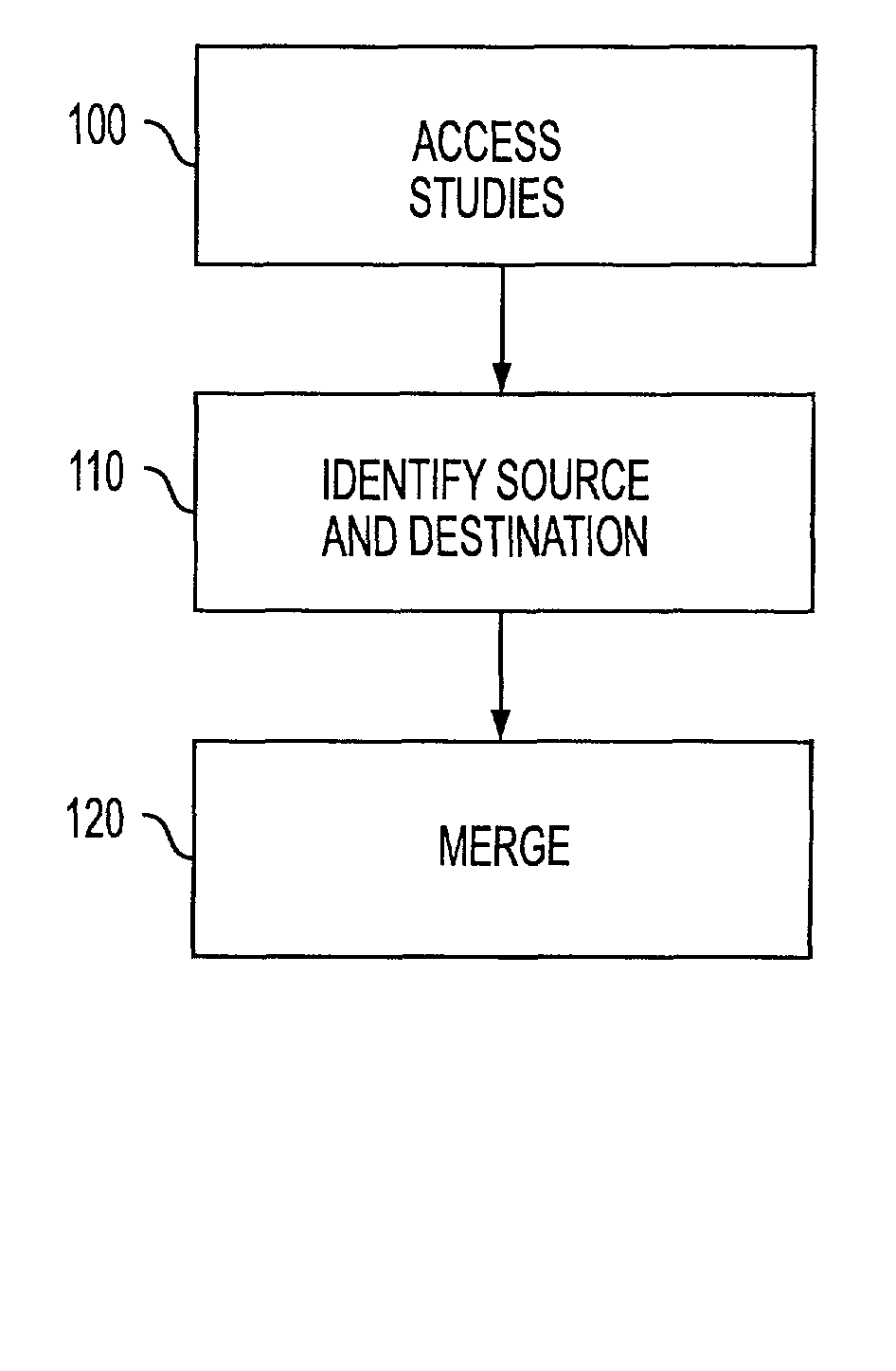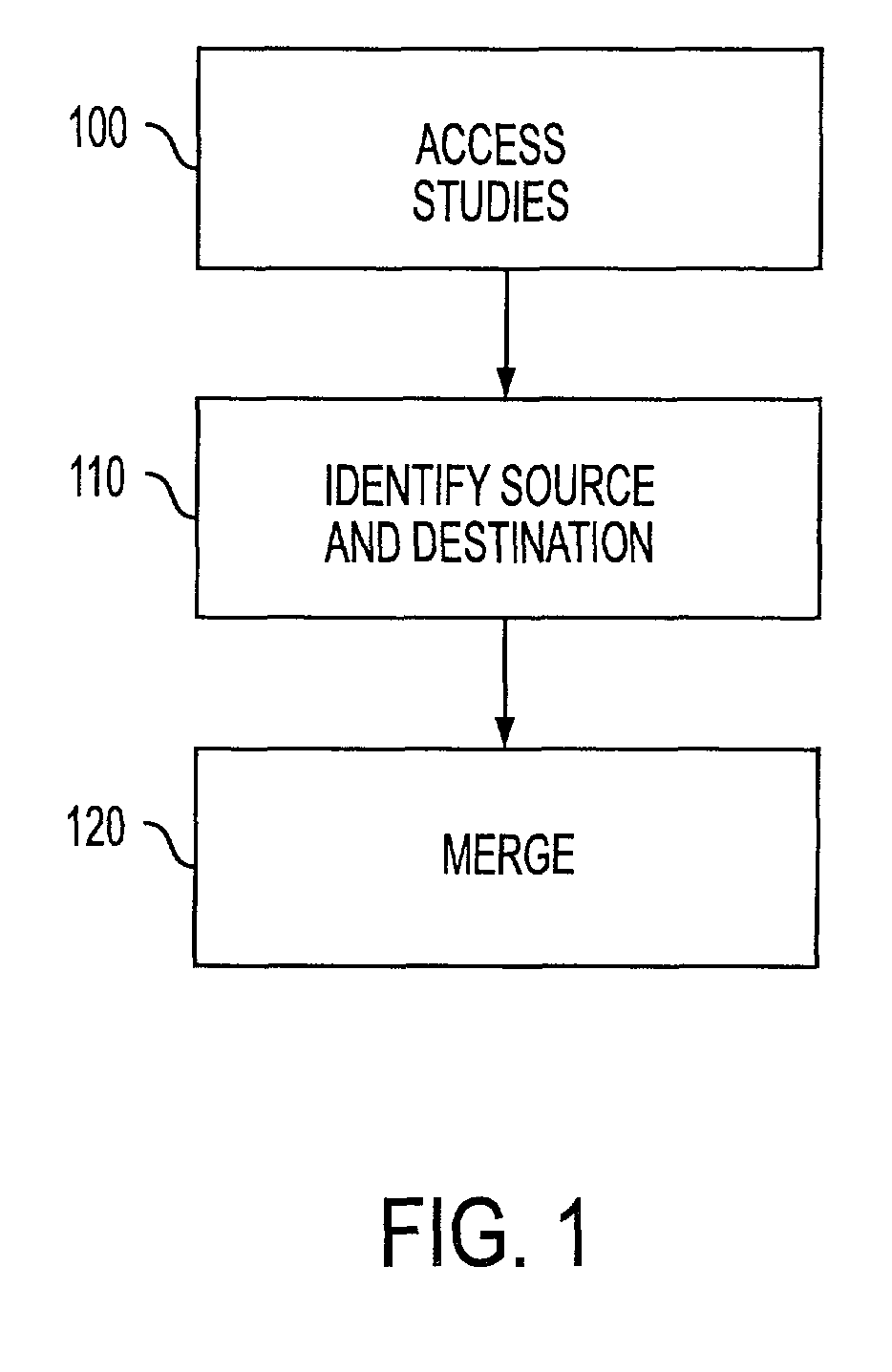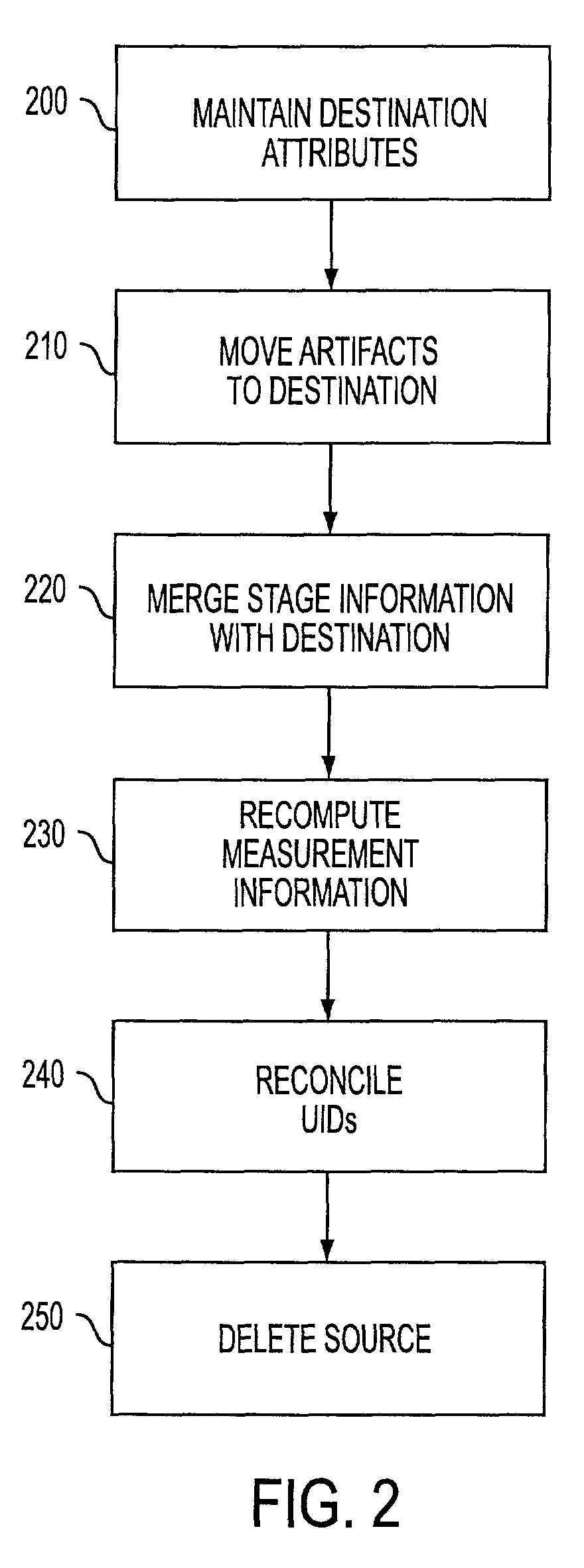Method and computer readable medium for merging studies
- Summary
- Abstract
- Description
- Claims
- Application Information
AI Technical Summary
Benefits of technology
Problems solved by technology
Method used
Image
Examples
Embodiment Construction
[0021]Reference will now be made in detail to the preferred embodiments, examples of which are illustrated in the accompanying drawings. In accordance with the preferred embodiments, there is provided a method and computer readable medium for merging separate unique studies.
[0022]Applicants have developed a standardized approach to healthcare medical information management that is believed to be a more accurate model of the real-world clinical environment.
[0023]Typically, when a referring physician places an order for one or more requested examinations, each of the requested examinations corresponds to a Requested Procedure and is assigned a “Requested Procedure ID.” A performed examination is collected in a study corresponding to the Requested Procedure and identified by a globally unique identifier, the Study Instance UID. Additional procedures may be acquired until the examination requested in the physician's order is completed. In addition, each study may include examination inf...
PUM
 Login to View More
Login to View More Abstract
Description
Claims
Application Information
 Login to View More
Login to View More - R&D
- Intellectual Property
- Life Sciences
- Materials
- Tech Scout
- Unparalleled Data Quality
- Higher Quality Content
- 60% Fewer Hallucinations
Browse by: Latest US Patents, China's latest patents, Technical Efficacy Thesaurus, Application Domain, Technology Topic, Popular Technical Reports.
© 2025 PatSnap. All rights reserved.Legal|Privacy policy|Modern Slavery Act Transparency Statement|Sitemap|About US| Contact US: help@patsnap.com



